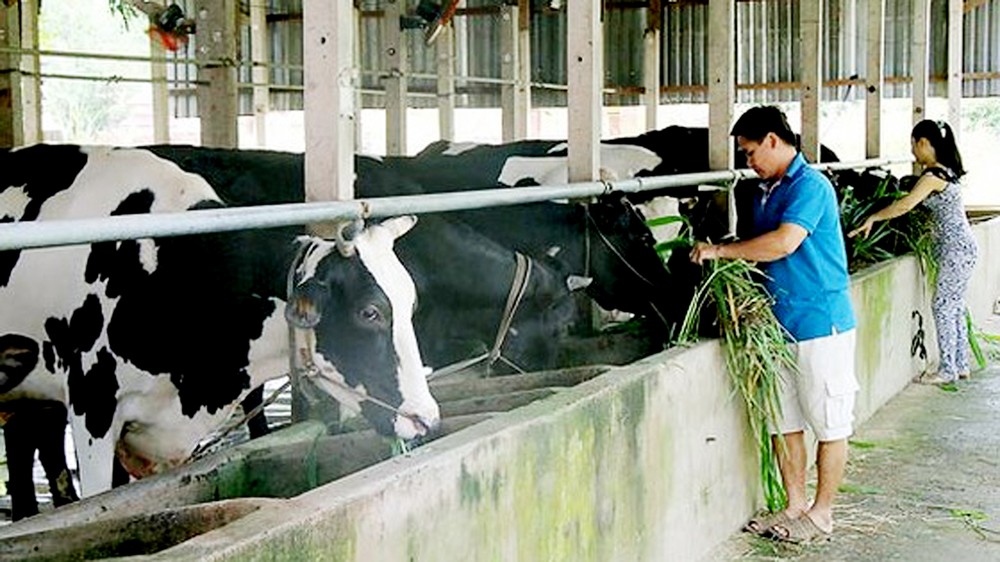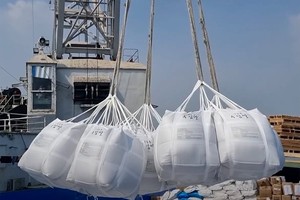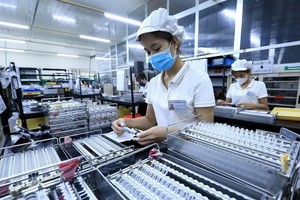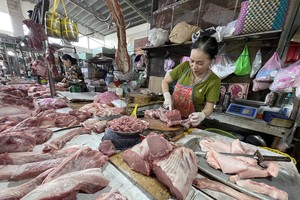The Vietnam Livestock Association has submitted an urgent petition to the Ministry of Industry and Trade, the Ministry of Agriculture and Environment, and the Ministry of Health, calling for immediate measures to safeguard the livestock sector amid a steep decline in the country’s dairy herd and fresh milk output.

Mr. Nguyen Xuan Duong, Chairman of the Vietnam Livestock Association, noted that between 2010 and 2015, Vietnam’s dairy herd expanded at an average annual rate of 15.4 percent, while fresh milk production grew 17.1 percent. However, from 2020 to 2024, those figures plunged to just 0.4 percent and 3.3 percent, respectively.
He warned that by 2025, the national herd is projected to reach only about 330,000 cows—equivalent to just 65 percent of the previously set target—posing the risk of missing the 2030 goal of 650,000–670,000 cows.
Meanwhile, raw fresh milk output has stagnated, falling short of demand for processing and consumption. This has led to an ever-increasing reliance on imports, which have risen by 8–12 percent annually, with some years surging as high as 20 percent.
The rapid boom in the domestic dairy market, with a flood of new brands and products, combined with supply chain disruptions, has left local farmers struggling to compete with imported milk. Many have been forced to downsize their herds or abandon the trade altogether. Traditional dairy strongholds such as Ho Chi Minh City and Ba Vi (Hanoi) have been hit particularly hard, with HCMC alone losing more than half of its herd in just a few years.
Although some companies and localities have managed to improve milk yields, Mr. Nguyen Xuan Duong stressed that higher productivity cannot offset the sharp decline in household-scale dairy farming, which once accounted for the majority of the national herd.
To secure national nutritional security and promote sustainable dairy development, the association has urged ministries to swiftly adopt policies mandating the use of at least 5–20 percent domestic fresh milk in production, to establish technical standards clearly distinguishing fresh milk from reconstituted milk, and to roll out a school milk program sourced from local dairy farmers. Such measures, the association argued, would both improve child nutrition and support local producers.
The association also recommended a dual approach to herd expansion: intensive large-scale farming by major corporations, alongside professionalized household farming at the scale of 20–100 cows per household, in order to leverage rural labor and agricultural by-products.
International comparisons highlight Vietnam’s lagging scale. In 2024, the country had just 3.3 dairy cows per 1,000 people—one-third the level of Thailand and Japan, half that of South Korea, and only one-twelfth that of Israel. By contrast, the Netherlands boasts 85.3 cows per 1,000 people. With favorable natural conditions, labor, and a growing market, the association believes Vietnam could triple its dairy herd to 1.3–1.5 million cows by 2030, yielding 4.3–5 million tons of fresh milk annually. That would be sufficient to cover 60 percent of processing demand after 2030, and move toward the target of 100 kilograms of milk per person per year by 2045.
The association warned that without timely policy adjustments, Vietnam’s dairy industry risks becoming overly dependent on imports, jeopardizing both the livelihoods of millions of farmers and the nation’s nutritional security. Conversely, if its advantages are fully harnessed, Vietnam has the potential to build a rapidly growing and sustainable dairy industry in the region.
























